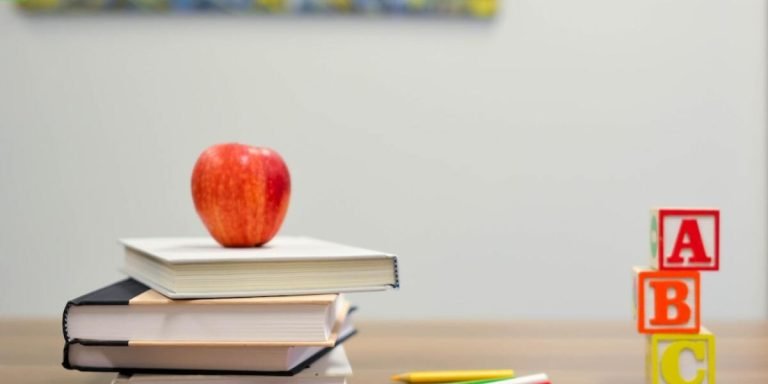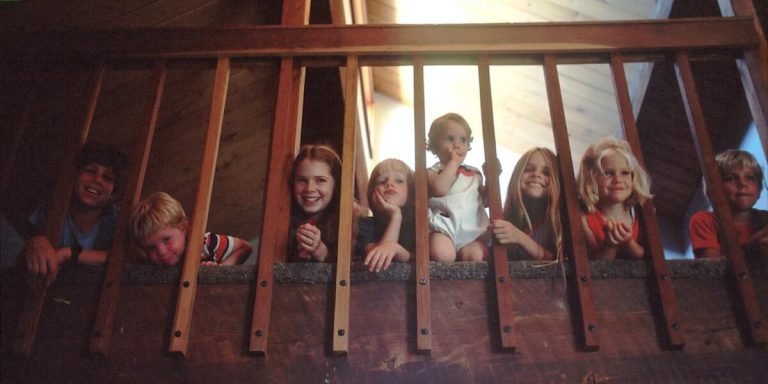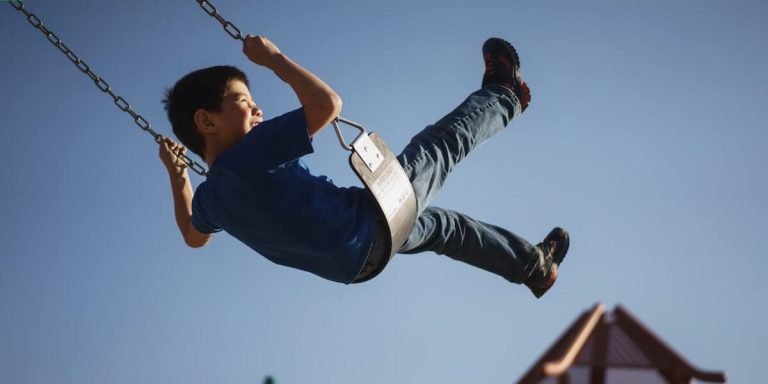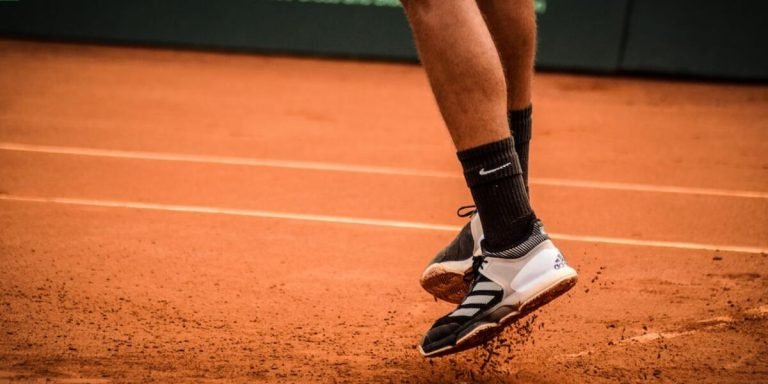Kindergarten Crafts: Engaging Young Minds Through Creative Fun
Kindergarten is a crucial stage in a child’s life, where every learning experience can shape their future. At this phase, traditional instructional methods may not be as effective as more interactive and engaging ones. This is especially the case for an innovative approach like “kindergarten crafts,” which provides experiential learning opportunities that stimulate young minds.
Introducing kindergarten crafts into curriculum has been found to enhance children’s understanding of various subjects. In essence, it brings forth activity-based learning by allowing kids to learn through play – painting pictures with their imagination while also grasping valuable skills and knowledge along the way.
Did you know?
Research shows that crafting in kindergarten not only sparks creativity but also boosts a child’s fine motor skills, spatial awareness and problem-solving abilities. Plus, it can enhance cognitive development by combining learning with fun-play.
The Role of Kindergarten Crafts in Enhancing Experiential Learning
Kindergarten Crafts are much more than just fun pastimes for children. These hands-on activities stimulate young minds, offering an enriching opportunity to learn and develop essential skills through play and creativity. By incorporating kindergarten crafts into their curriculum, early educators can seamlessly blend ‘Experiential Learning’ principles with traditional teaching methodologies.
Crafts encourage youngsters to explore different materials, tools, colors, shapes and patterns while constructing or designing something of their own. This process helps foster crucial cognitive development; all the while honing fine motor skills as they cut paper strips or squeeze glue onto cardboard pieces.
The beauty of Experential Learning in a Kindergarten setting lies within this dynamic interplay between inherent curiosity and guided instruction where learning is multi-dimensional – spanning across physical dexterity to logical reasoning abilities.
In 2023’s digitized world where screens dominate over most forms of interaction; kindergartens crafting activities remain vital in ensuring that our youngest learners still engage actively with tactile experiences – stimulating not only academic growth but also encouraging creative expression whilst promoting emotional well-being thus proving themselves as invaluable components towards holistic child-development strategies.
Understanding the Basics of Experiential Learning Through Craft Activities
Experiential learning is more than just a modern educational buzzword. It represents an innovative and practical approach to teaching, where knowledge is absorbed through direct experience rather than traditional instruction methods. Kindergarten crafts play a pivotal role in this process.
Kindergarten craft activities are ideal for experiential learning due to their hands-on nature. By creating art from raw materials, children learn how different elements come together while gaining a deeper understanding of the world around them – all wrapped up in fun-filled engagement!
Firstly, these activities build fine motor skills as young learners manipulate tools like scissors or brushes with agility and precision. Secondly, crafting fosters creativity by encouraging kids to express themselves freely without worrying about right or wrong results – thus planting seeds for innovative thinking down the road.
These above points clearly outline why incorporating crafts into kindergarteners’ curricula can greatly enhance experiential learning outcomes in 2023.
Key Benefits of Incorporating Crafts into Kindergarten Curricula
Key benefits of incorporating craft-based activities into Kindergarten curricula include:
1. **Boosts Creativity:** Crafts encourage young minds to think out-of-the-box and foster creativity. They provide avenues for students to express themselves freely while coming up with innovative solutions.
2. **Enhances Fine Motor Skills:** The intricate tasks involved in crafting such as cutting paper or threading beads can significantly improve hand-eye coordination and fine motor abilities – essential skills that lay foundation for academic success.
3. **Stimulates Cognitive Development**: Craft projects often require problem-solving capabilities which stimulate cognition growth among kindergarteners- from identifying patterns to recognizing shapes, colors etc., all contribute towards cognitive development.
Crafting a Foundation: How Activity-Based Learning Shapes Early Development
In the realm of child education, “kindergarten crafts” emerge as an essential tool for facilitating experiential learning. These hands-on activities put creativity at the forefront and encourage children to express themselves openly while building fundamental skills.
Experiential or activity-based learning is more than just fun; it’s about engaging young minds in problem-solving tasks, shaping their cognitive abilities, strengthening fine motor skills and developing spatial awareness. Kindergarten crafts not only nurture individual talent but also foster team spirit when involving group projects promoting peer interaction.
In our technologically advanced world of 2023, despite advancements in digital learning tools, kindergarten crafts still hold equal importance. The tactile experience these activities provide helps kids establish strong neural connections that are crucial during this developmental stage.
The purposeful play involved in such craft sessions provides opportunities for kindergarteners to explore independently—the quintessence of active learning—boosting self-confidence and fostering decision making early on. As we help them glue pieces together or paint vibrant pictures using different materials like paper plates, beads or clay pots—we unconsciously instill foundational lessons rooted around planning execution and even dealing with success or failure.
crafts’ play an instrumental role by providing multi-faceted benefits wrapped within joyous activities! Let’s continue crafting foundations one creative project at a time!
Core Principles of Activity-Based Learning in Childhood Education
The core principles of activity-based learning are simple yet profound. These underline the importance of experiential or hands-on learning over traditional rote methods.
1. **Active Participation**: Children learn best when they’re given an opportunity to participate actively rather than just passively receiving knowledge.
2. **Practical Approach**: With kindergarten crafts being a part of their curriculum, children tend not only to grasp concepts faster but also understand their practical applications effortlessly.
3. **Multi-sensory Inputs**: Researchers acclaim that utilizing different senses during lessons enhances information retention substantially in young minds.
4 .**Promoting Creative Thinking**: Crafts empower learners by offering them creative control — encouraging self-expression while concurrently fostering creativity.
5 .**Enhancing Soft Skills**: Besides academic growth, ABL fosters development in areas like teamwork, problem-solving abilities and communication skills as well!
With these principles at heart, activity-based learning vastly helps mold rounded personalities from a tender age onwards; be it cognitive enhancement through storytelling sessions or social skill development via interactive group games – every facet is catered to meticulously under this teaching methodology.
Cognitive and Motor Skill Advancements Through Hands-On Crafting
The immense value of handcrafted kindergarten crafts in early childhood education cannot be overstated. They are not just fun-filled activities but also instrumental tools that fuel cognitive and motor skill advancements through experiential learning or activity-based learning.
In a world becoming increasingly digitalized, regular engagement with creation-oriented tasks like crafting holds an essential place in children’s development agenda. It paves the way to understand complex concepts intuitively while fostering creativity and independence among kids.
Cognitive skills often refer to how we learn, think, solve problems, and make decisions. Kindergarten crafts offer an immersive environment for these abilities to thrive as they involve planning what craft items to use, understanding instructions on assembling them together – all demanding critical thinking exercise at every stage.
Additionally, simple actions such as cutting paper pieces aligning them into patterns or using glues can stimulate fine motor skills growth remarkably well amongst young learners. Allowing kids hands-on experiences aids their physical coordination whilst helping develop agility within their tiny fingers; this proves beneficial when they start writing eventually- one big milestone in any child’s life!
One might question whether kindergarteners who haven’t developed proficient reading capacities yet could grasp the underlying lessons from such crafting sessions? Well! 2023 has some ingenious solutions up its sleeve here – picture diagrammatic instructions!
Visual representation is comprehensible even by pre-literate kids making recipe-followed crafting accessible for them too!
Innovative Craft Projects That Drive Engagement and Growth in Young Learners
The realm of kindergarten crafts has experienced a wave of innovation in recent years, evolving way beyond basic cut and paste activities. The year 2023 brings with it an emphasis on experiential learning – the idea that children learn better by doing rather than passively consuming information. Across the educational landscape, teachers and parents are tapping into this form of activity-based learning for promoting holistic development in young learners.
Innovative craft projects play an instrumental role within this pedagogical approach as they stimulate creativity while simultaneously fostering important skills such as motor coordination, problem-solving abilities, patience and collaborative working mechanisms among kindergarteners. More importantly, these hands-on creative exercises make learning fun-filled affair which contributes to improving attentiveness hence enhancing their overall academic performance.
To achieve maximum growth through engagement via these constructive activities though lies in choosing appropriate craft ideas rooted deeply in practicality alongside being imaginative outlets for kids’ self-expression interests; understanding what resonates best with each child’s unique personality traits will ensure sustained interest leading towards successful comprehension outcomes long term wise thereby proving efficacy behind experiential education system enabled crafting ventures nowadays.
Strategies for Integrating Diverse Crafts to Cater to Multiple Intelligences
In today’s dynamic educational landscape, it is pivotal to engage with children on multiple sensory and intelligence levels. Diverse crafts play a significant role in this context as they aid not only in developing cognitive skills but also foster creativity among kindergarten students.
One of the primary strategies for introducing diverse crafts is delineating an Activity Based Learning (ABL) approach or Experiential Learning strategy. These approaches encourage children to learn through hands-on experiences rather than conventional rote learning methods.
When planning these activities, parental involvement can hold the key. Parents can work together with educators by applying innovative ideas at home that align with what kids learn at school. This method strengthens knowledge retention and paves the way for comprehensive education – which implements “kindergarten crafts” into daily routines seamlessly.
Furthermore, integrating digital media like how-to videos or interactive online games alongside physical crafting exercises will cater even more effectively towards tech-savvy youngsters living in 2023!
Crafts also provide opportunities for team-based activities promoting peer interaction and social skills development essential during early formative years.
Measuring Progress and Impact Post-Crafting Sessions
Understanding and measuring the impact of kindergarten crafts on a child’s learning journey has never been more critical. With an increase in research supporting activity-based learning, determining progress post-crafting sessions is essential for educators and parents alike.
The first step involves reflection and observation. As your young learner engages with their craft project, observe how they interact with materials and respond to challenges that arise during the creative process. Are they eagerly experimenting?
Or do they seem apprehensive about stepping outside their comfort zone?
Record anecdotal notes referring to these observations which can provide valuable insights into behavioral changes over time brought by this innovative approach towards education.
Secondly, utilize tools designed explicitly for tracking development milestones in children such as physical skills (fine motor abilities), cognitive function advancements like problem-solving strategies developed or refined while participating in the crafting session.
Pay close attention also to language acquisition improvements – often through narrating steps involved in constructing their craft-work youngsters develop better communication skills – another crucial outcome of experiential learning methodologies implemented via playful activities underpinned by educational objectives.
Additionally, consider conducting informal interviews or conversations after each session where you encourage them talking freely about what was learned from every particular task completed. This provides immediate feedback on various dimensions including comprehension levels attained besides enhancing verbal proficiency simultaneously too!
Conclusion
In the vibrant world of kindergarten crafts, engaging young minds ignites their imagination and fosters an enduring love for learning. The blend of fun with education not only keeps them fascinated but also nurtures cognitive development in a joyous environment. So, let’s bid adieu to rote memorization and say hello to creativity that is playfully educational!
Don’t stop at kindergarden Crafts though! We have curated a library full of resources designed specifically for parents and educators like you who are dedicated to holistic childhood education. Whether it’s detailed articles or helpful guides on various aspects of child teaching methods, rest assured there’s something beneficial awaiting your discovery right here on our website – because educating children isn’t just about imparting knowledge; it’s about preparing them for life!







